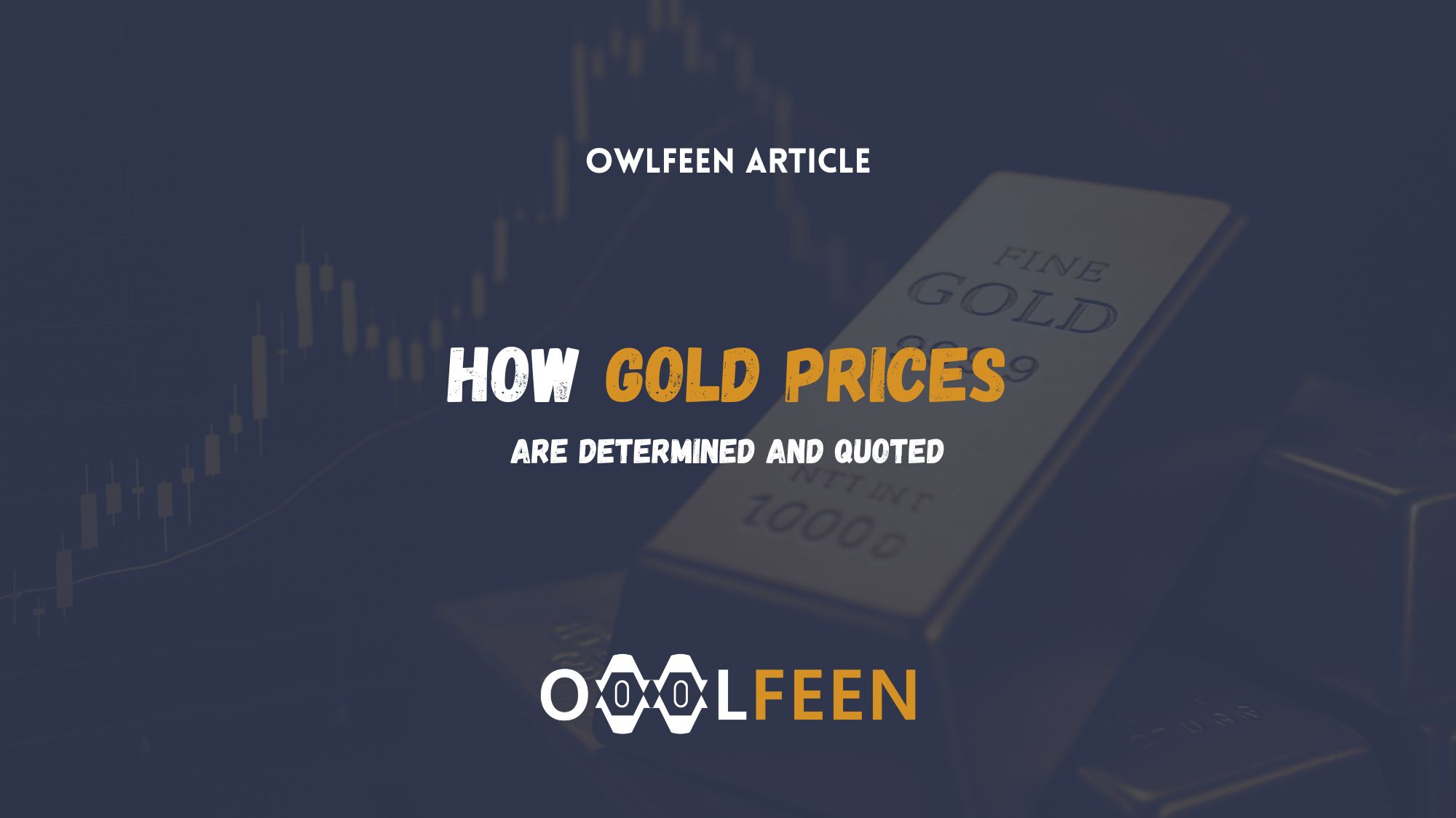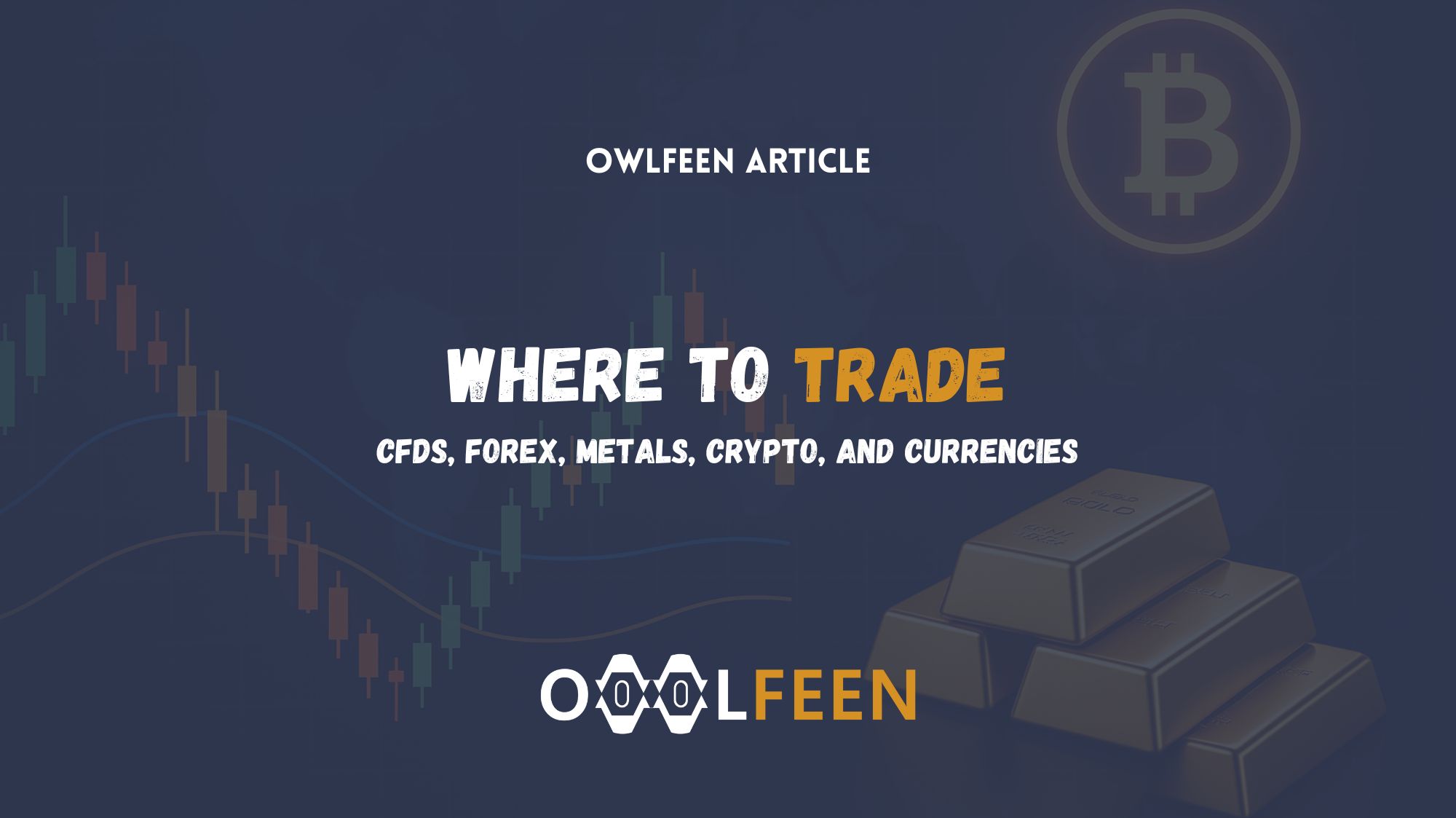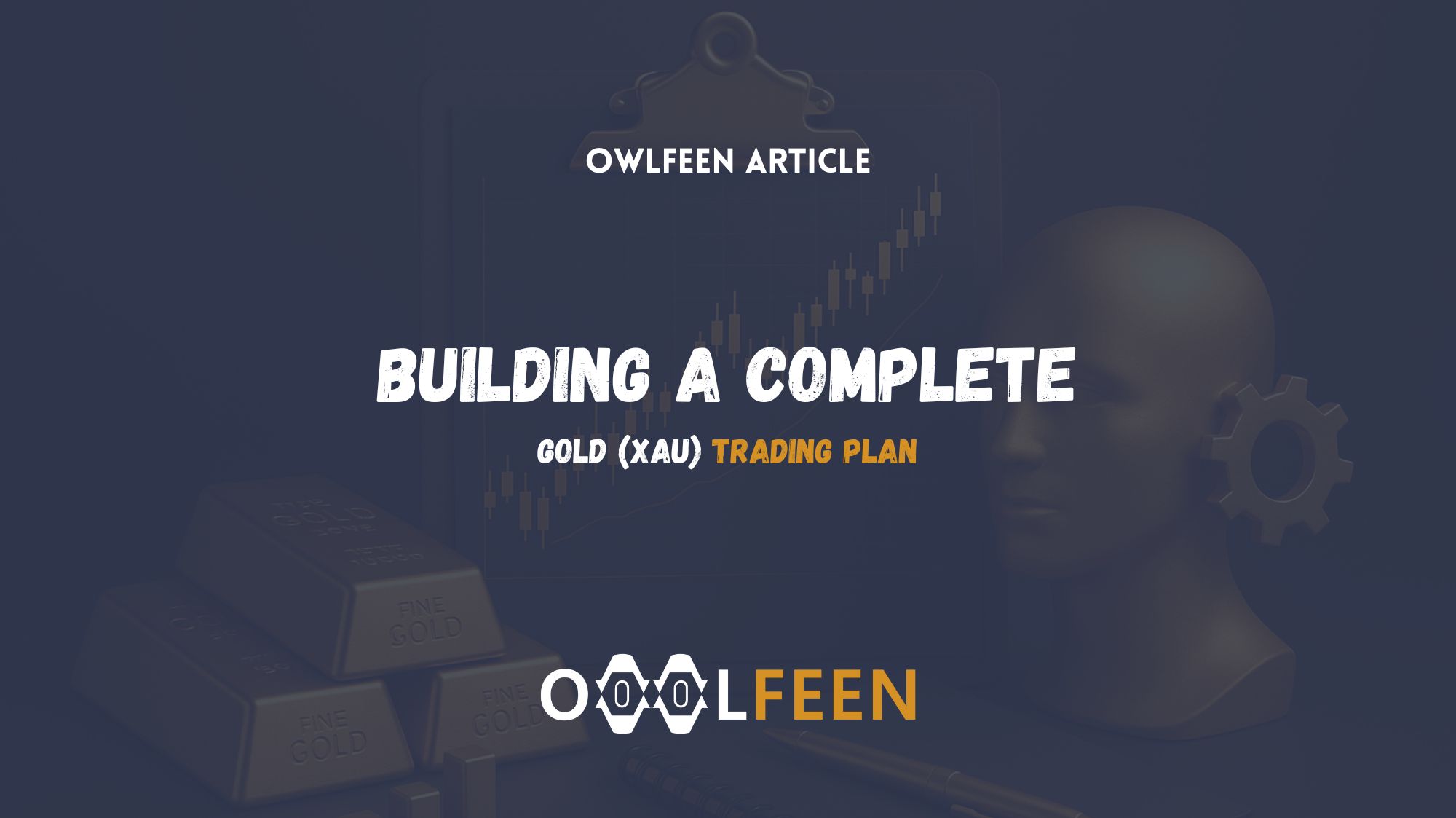Gold is one of the most closely watched assets in global markets. Every movement in its price reflects a combination of economic forces, investor sentiment, and global stability. For traders, understanding how gold prices are formed and quoted is a key foundation for making informed decisions.
This lesson explains exactly how the price of gold is determined, how it is quoted on trading platforms, what influences it from day to day, and how to interpret these movements in your trading strategy.
How Gold Prices Are Determined
The price of gold is not fixed by any single entity. It is the result of continuous buying and selling across global markets, with the largest trading centers located in London, New York, and Shanghai. Gold prices are primarily influenced by demand and supply, investor behavior, and macroeconomic trends.
Here are the most important factors that determine gold prices.
1. The US Dollar
Gold is priced internationally in US dollars. Because of this, the strength or weakness of the dollar directly affects gold prices.
-
When the US dollar weakens, gold becomes cheaper for foreign buyers, increasing demand and pushing prices higher.
-
When the dollar strengthens, gold becomes more expensive for other currencies, reducing demand and pressuring prices lower.
This inverse relationship between gold and the dollar is one of the most consistent dynamics in financial markets.
2. Inflation and Interest Rates
Gold has always been viewed as a hedge against inflation. When the cost of goods and services rises, the purchasing power of paper money declines, and investors seek assets that preserve value.
-
When inflation is high or expected to rise, gold tends to appreciate because it is seen as a store of value.
-
When interest rates rise, gold may face pressure because holding it provides no yield compared to interest-bearing assets like bonds.
The most important driver here is real interest rate, which is the nominal interest rate minus inflation. Gold usually performs best when real interest rates are low or negative.
3. Central Bank Policies
Central banks play a major role in the gold market. Many hold gold reserves as part of their financial stability strategy. When central banks buy gold, they increase demand and often trigger bullish momentum.
Central banks may also influence gold indirectly through monetary policy. For example, when the Federal Reserve lowers rates or launches stimulus programs, it often weakens the dollar and lifts gold prices.
4. Geopolitical and Economic Uncertainty
Gold is known as a safe-haven asset because investors turn to it in times of uncertainty.
Events such as wars, recessions, banking crises, or political instability push investors away from risky assets like stocks and toward safe assets like gold.
During such periods, gold prices often rise sharply as traders seek security and long-term value preservation.
5. Supply and Mining Costs
While most gold price movements are driven by financial markets, physical supply still plays a role.
-
Mining output changes slowly but can influence long-term trends.
-
Rising extraction costs or reduced production can support higher prices.
-
Conversely, large-scale discoveries or recycling increases supply and may limit price growth.
However, short-term fluctuations are primarily financial rather than physical, meaning investor sentiment has a larger impact than mine production.
6. Global Gold Demand
Demand for gold comes from multiple sources.
-
Jewelry demand in countries like India and China accounts for a large share of physical consumption.
-
Investment demand includes ETFs, bars, and coins purchased by retail and institutional investors.
-
Industrial demand for electronics and medical applications adds a small but steady base.
Seasonal demand, such as during festive or wedding seasons in Asia, can also affect short-term price dynamics.
How Gold Prices Are Quoted
In global markets, gold prices are typically quoted in US dollars per troy ounce. The common format you see on trading platforms is XAU/USD.
For example:
If XAU/USD = 2350.00, it means one ounce of gold costs 2350 US dollars.
Here are the main details to know.
1. Quotation Unit
Gold is quoted per troy ounce, which equals 31.1035 grams. This unit is universal in the precious metals market and ensures standardization across global exchanges.
2. Pip Value and Tick Size
In most trading platforms, the smallest movement in gold’s price is 0.01, known as one pip. For example, if the price moves from 2350.00 to 2350.01, that is a 1-pip movement.
The pip value depends on your lot size. For a standard lot (100 ounces), a 1-pip movement equals 1 USD. For smaller positions such as 0.1 lot, the value changes proportionally.
3. Bid and Ask Prices
Just like currency pairs, gold trading platforms display two prices.
-
Bid price: The price at which you can sell gold.
-
Ask price: The price at which you can buy gold.
The difference between the two is the spread, which represents the broker’s transaction cost. Spreads can widen during high volatility or important news events.
4. Spot vs Futures Prices
-
Spot price is the live market price for immediate settlement. It reflects the real-time value of gold globally.
-
Futures price is the agreed price for gold delivery at a future date. Futures may trade at a premium or discount depending on interest rates and storage costs.
In most retail platforms, traders see the spot XAU/USD price, not the futures contract.
5. Price Fixing and Benchmarks
The London Bullion Market Association (LBMA) provides two daily benchmarks known as the London Gold Fixing – one in the morning and one in the afternoon. These are used by institutions as official reference rates for gold transactions.
While individual traders deal with real-time prices, these benchmarks remain key reference points for large-scale contracts and settlements.
How Economic Data Affects Gold Prices
Gold is highly sensitive to economic news, especially from the United States. The most impactful releases include:
-
Non-Farm Payrolls (NFP): Strong job data often boosts the US dollar and pressures gold.
-
Consumer Price Index (CPI): Rising inflation usually supports gold prices.
-
Federal Reserve Interest Rate Decisions: Lower rates tend to lift gold, while rate hikes weigh on it.
-
GDP and Manufacturing Data: Strong economic data can shift sentiment toward risk assets and away from gold.
Learning how to read economic calendars and anticipate volatility around major announcements is an essential skill for every gold trader.
Educational Tip
Gold price action is not random. It follows patterns of reaction to global economics, liquidity conditions, and market psychology. Traders should always track the relationship between gold and the US dollar, bond yields, and inflation expectations.
For new traders, the simplest approach is to observe how gold reacts after major economic reports and central bank meetings. This builds the ability to connect macro events with price movement in real time.
Conclusion
The price of gold is a reflection of global confidence, risk appetite, and economic stability. It moves based on multiple forces, from currency fluctuations and interest rates to central bank decisions and geopolitical tension.
Gold is quoted in US dollars per troy ounce, traded as XAU/USD across global platforms. By understanding how prices are determined and quoted, traders can interpret movements more accurately, plan trades with confidence, and respond to market changes with better timing.
In the next part of this series, we will explore Key Economic Drivers and News That Move Gold, breaking down the most important events and data points that consistently impact gold’s direction.
This article is part of the Trading Gold A–Z educational series on OwlFeen Learn, designed to help traders understand every core aspect of the gold market and develop a complete trading foundation.
The full series includes:
Each part builds upon the previous one to provide a structured and comprehensive understanding of how to analyze, plan, and execute trades in the gold market effectively.



